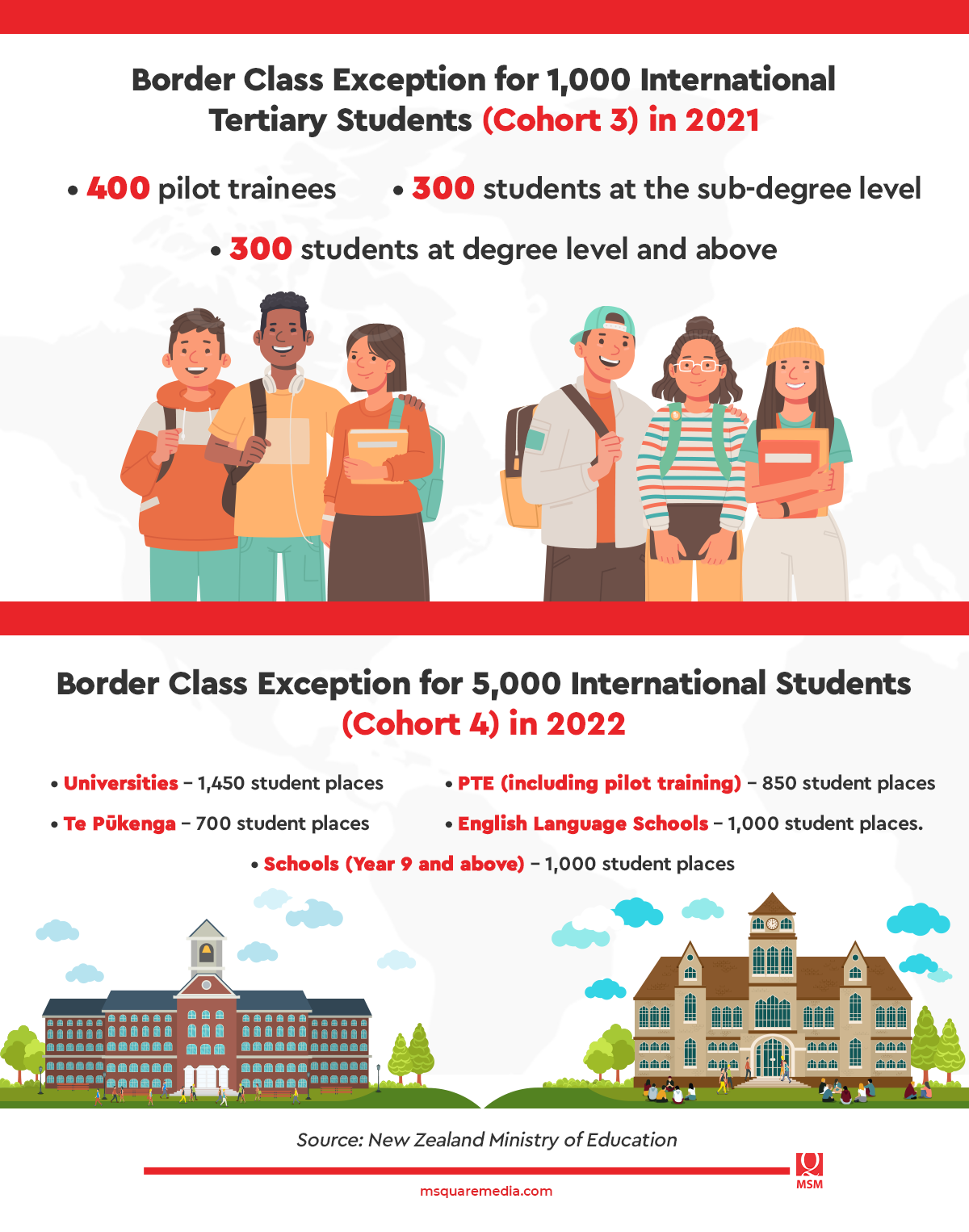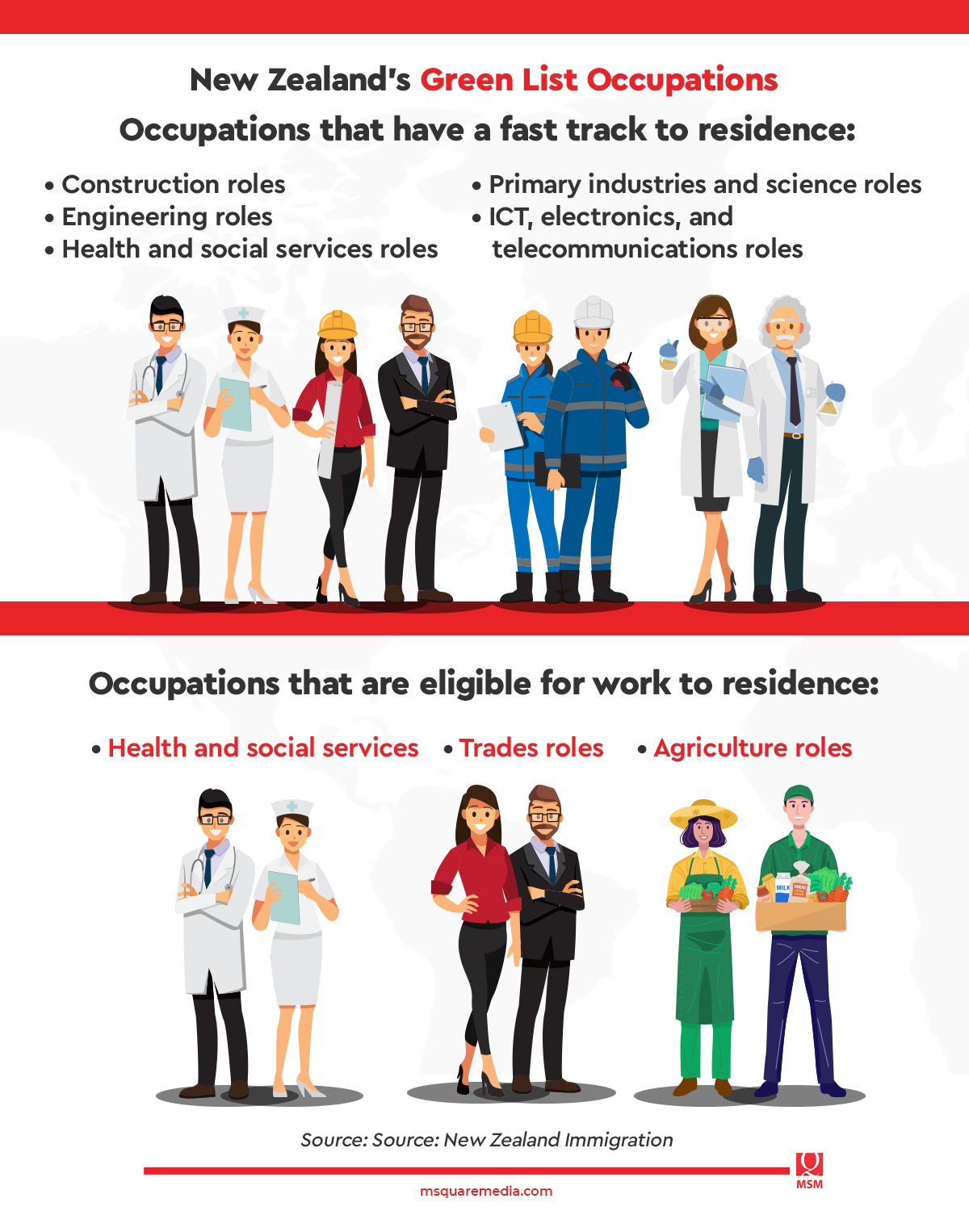Key Takeaways:
- The government designed an Immigration Rebalance to entice and employ more high-skilled migrants instead of lower-skilled migrants.
- For international education, the government has approved a border exception for up to 5,000 international students to travel to New Zealand
- From the previous $15,000 fund requirement, tertiary and English-language students now have to demonstrate a financial capacity of $20,000 and $17,000 for prospective international school students per annum.
After more than two years of strictly closed borders due to the COVID-19 pandemic, New Zealand is slowly stripping its barricades to welcome the world for leisure travel, employment, and international education.
As the latest data reports that over 3,980,190 or 95% of its eligible population were vaccinated, the government has grown more optimistic and has announced its reconnection with the world by July 31 — two months ahead of its original plan.
“New Zealand is in demand and now fully open for business,” Prime Minister Jacinda Ardern said.
In the announcement of the reforms, Ardern shared that the full resumption of the country would help in relieving labor shortages, reviving tourism, placing immigration on a more secure footing, and bolstering an economic future through a proven plan.
“This follows our previous reconnecting work which has seen approvals granted for over 29,000 critical workers, 5,000 students, working holidaymakers, Australian tourists, and visa-waiver visitors already able to enter the country,” Arden said.
Early Entry for Nominated Students
The NZ government has set a comprehensive timeline for reforms as it welcomes travelers to the country. For international education, the government has approved a border exception for up to 5,000 international students to travel to New Zealand, expecting the volume to arrive before the mid-year study starts. Those who hold a Working Holiday visa to take English language courses, a Study Abroad program, or a short training course are allowed to enter the country as well.

Under Cohort 4, only those foreign students who were accepted and nominated by New Zealand education providers from offshore, before May 6, 2022, are eligible to submit a visa application. Thus, international students and their providers must have worked religiously to fulfill the needed requirements in a tight phase.
“More than 5,000 international students have already been confirmed for entry as part of previous border exemptions, which means they can be here by mid-July. From the end of July, all international students who meet normal entry criteria can enroll for study here,” Education Minister Chris Hipkins said.
Strengthening Education System through Immigration Rebalance
Hipkins said that the future will be different. “We won’t be going back to National’s volume over value approach that became a backdoor to residency for lower-skilled and lower-paid migrant workers, who were then at risk of exploitation,“ he said.
The government designed an Immigration Rebalance to entice and employ more high-skilled migrants instead of lower-skilled migrants. The said initiative also aims to support the productivity and resilience of some sectors.
The launch of this refreshed “high value” model complements the country’s international education strategy by providing quality education and strengthening the education system.
Post-Study Work Rights
Part of the immigration rebalancing is altering the country’s post-study work rights. One of the notable changes is the creation of a Green List that has direct pathways to residency.

“The cornerstone of our rebalance is the new Green List which will incentivize and attract high-skilled migrants to New Zealand by providing a new streamlined pathway to residency for those globally hard to fill roles. The list features 85 hard-to-fill roles including construction engineering, trades, health workers, and tech,” Immigration Minister Kris Faafoi said.
Furthermore, changes in Post-study work rights include:
- Students in non-degree level courses will not get post-study work rights except where they are studying and whose work is related to the Green List.
- For degree-level and other eligible international students, the length of time they can work after their studies will mirror the time they study in New Zealand. Currently, some students can work for up to three years after a 30-week study. Masters and Ph.D. students will retain the right to work in New Zealand for up to three years after their studies.
- Students will also not be able to apply for a second post-study visa in New Zealand.
Higher Living Costs for Higher Ed Students
Along with the changes, the cost of living in New Zealand is expected to increase as well. Hence, prospective international students must come prepared to apply with additional funds.
From the previous $15,000 fund requirement, tertiary and English-language students now have to demonstrate a financial capacity of $20,000 and $17,000 for prospective international school students per annum.
Aviation students, on the other hand, have to pay their full tuition fees for the first year of study and must “prove to have funds for the same period.”
For students shifting to post-study work visas from May 11, a fund of $5,000 must be provided.
Conclusion
In 2019, international education contributed a whooping NZ$5.23 billion to New Zealand’s economy—NZ$1.21 billion came from international student fees alone— making the sector the fourth largest export earner to national and regional economies.
Before the pandemic, government data showed that “just under 50,000 jobs were supported by1 the international education sector. This is made up of 47,500 jobs onshore connected to visiting students, and a further 2,141 jobs (973 in New Zealand and 1,168 offshore) from offshore activity.”
When the pandemic hit the Kiwis, “Immigration New Zealand figures show fewer than 12,000 foreign students remain in the country. That is down from nearly 52,000 when the pandemic started two years ago.”
And now that New Zealand is unlocking its gateways to welcome foreign students, with reformed standards, the country anticipates not just economic prosperity and enrollment recovery but honing future dexterous and talented citizens as well.

SUNEETHA QURESHI
MSM President - Global
Suneetha has worked for 15 years in the international education sector and 25 years overall for her work for other industries. As president of MSM, she fortifies its business development outreach globally, particularly in the face of MSM’s foray into edtech-based recruitment via MSM Unify. She preserves the premium, value-adding services provided to each MSM partner institute, including dedicated teams on the ground, agent management, lead generation and inquiry management, application prescreening, and student and parent support through pioneering pre-departure briefing sessions.
She has an impeccable track record of successfully launching the representative offices in Asia and Africa of many North American and European higher education institutions. Her key strengths include hiring, training, and developing teams as evidenced by the successful results of the dedicated in-country college and university client teams.
Suneetha also has taken the lead in developing several initiatives at MSM, including building robust standard operating procedures, the Rise ‘n Shine team engagement platform, and the organization’s data analytics and audit segments.
Sources:
- Pfalz, L. 2022. New Zealand Reopening to International Travelers Sooner Than Planned. Travel Pulse. Retrieved from https://www.travelpulse.com/news/impacting-travel/new-zealand-reopening-to-international-travelers-sooner-than-planned.html
- Sinclair, J. 2022. International students supported 50,000 jobs in 2019, figures show. Research Professional News. Retrieved from https://www.researchprofessionalnews.com/rr-news-new-zealand-2021-2-international-students-supported-50-000-jobs-in-2019-figures-show
- 2022. New Zealand opens up to international students and updates policies for post-study work rights. icef Monitor. Retrieved from https://monitor.icef.com/2022/05/new-zealand-opens-up-to-international-students-and-updates-policies-for-post-study-work-rights/
- 2022. COVID-19: Vaccine Data. New Zealand Ministry of Health. Retrieved from https://www.health.govt.nz/covid-19-novel-coronavirus/covid-19-data-and-statistics/covid-19-vaccine-data
- 2022. Fully open border and immigration changes speed up economic growth. Beehive.govt.nz. Retrieved from https://www.beehive.govt.nz/release/fully-open-border-and-immigration-changes-speed-economic-growth
- 2022. ‘Huge step’: New Zealand to fully reopen borders on July 31. Al Jazeera. Retrieved from https://www.aljazeera.com/economy/2022/5/11/new-zealand-to-fully-reopen-borders-from-july-31
- 2022. New Zealand border fully reopening by July 2022. New Zealand Immigration. Retrieved from https://www.immigration.govt.nz/about-us/media-centre/news-notifications/nz-border-fully-reopening-july-2022
- 2022. Fewer than 12,000 foreign students remain in New Zealand. nzherald.co.nz. Retrieved from https://www.nzherald.co.nz/nz/fewer-than-12000-foreign-students-remain-in-new-zealand/CHV76QWPGDZS5HHMZPCGILSXLI/
- 2022. Border class exception for 1,000 international tertiary students. New Zealand Ministry of Education. Retrieved from https://www.education.govt.nz/news/border-class-exception-for-1000-international-students/
- 2022. Border class exception for 5,000 international students. New Zealand Ministry of Education. Retrieved from https://www.education.govt.nz/news/border-class-exception-for-5000-international-students/
- Green List Occupations. New Zealand Immigration. Retrieved from https://www.immigration.govt.nz/new-zealand-visas/apply-for-a-visa/tools-and-information/work-and-employment/green-list-occupations
- 2018. International education contributes $5.1 billion to New Zealand economy. Beehive.govt.nz. Retrieved from https://www.beehive.govt.nz/release/international-education-contributes-51-billion-new-zealand-economy
